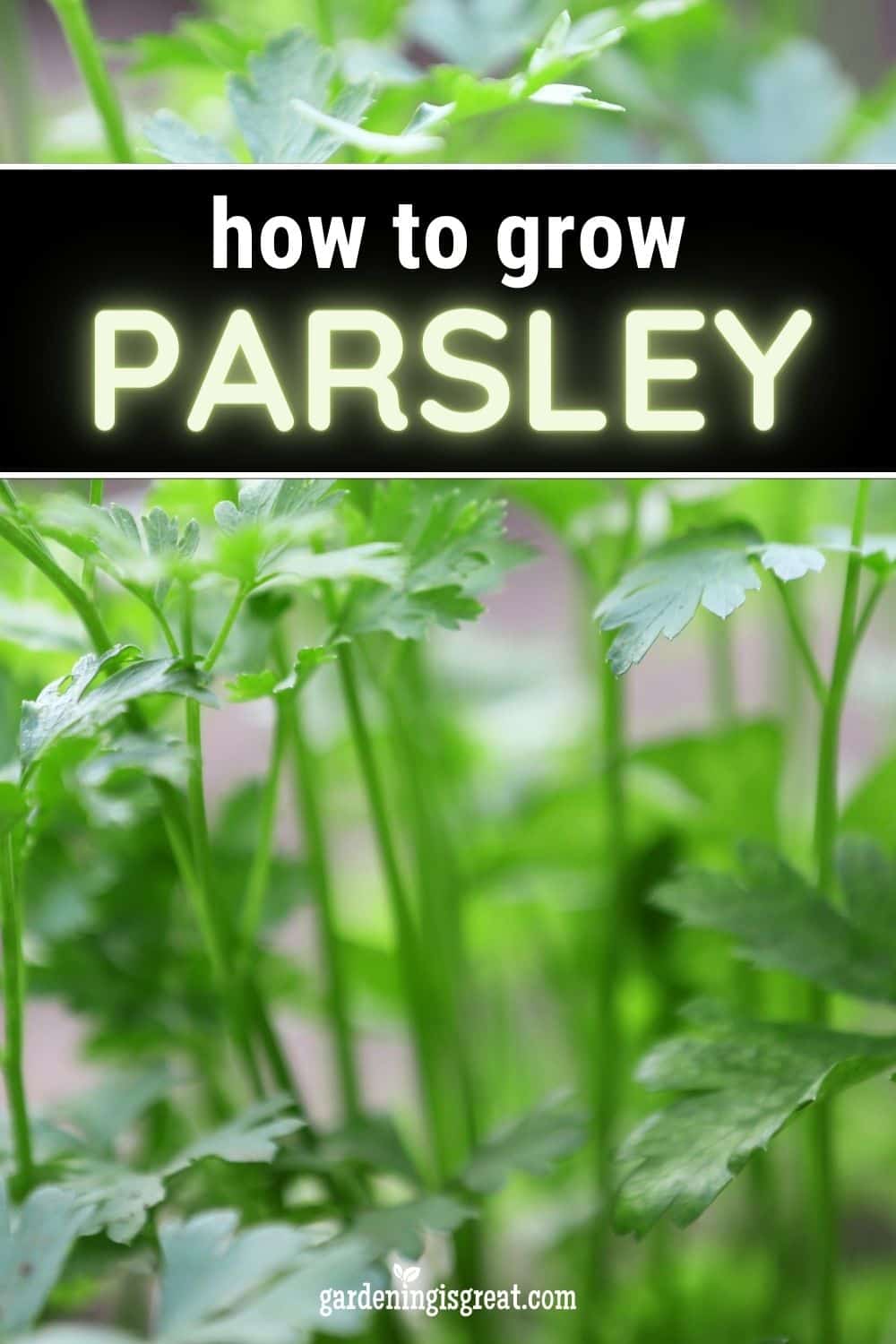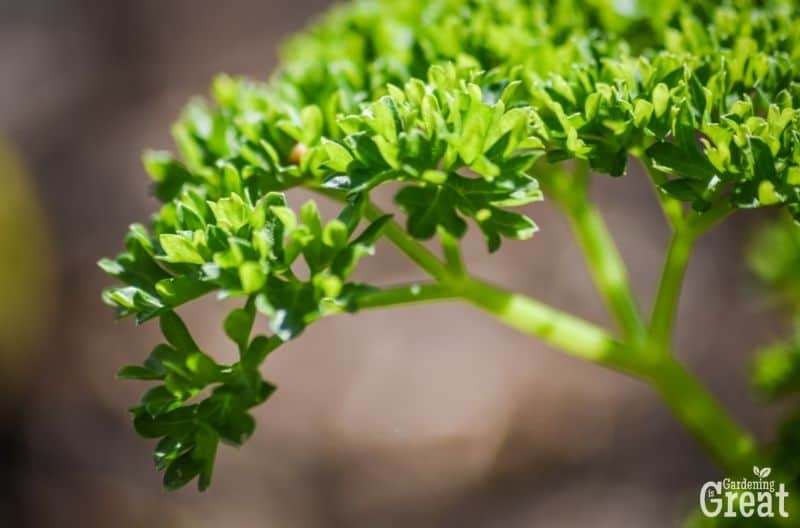How to Grow Parsley in the Garden
Parsley is an easy-to-grow herb that makes a great garnish for some of your favorite foods. Parsley is delicious paired with eggs, in salads, or any dish that needs some extra flavor!
Often used to garnish and add a hint of flavor, parsley is used most often in Italian dishes but makes a great substitute for cilantro in Mexican dishes for those that do not like the flavor of cilantro.

This post contains affiliate links that earn me a commission at no additional cost to you.
How to Grow Parsley
Although it will thrive in full sunlight, if you live in a hot area, such as the Southwest or South, it will tolerate a little shade.
In zones 8 through 10, plants should be planted in the fall, to give your plants time to become well established before the summer heat rolls in. Zones 7 and below should plant parsley in late spring, after the last frost.
Parsley should be planted with fresh compost and you should fertilize it every 4 to 6 weeks to help it thrive. If you want a stronger flavor for preserved parsley stop fertilizing 6 weeks before your final harvest.
Keep your parsley well watered and cut away flowers if you do not want your parsley to seed and spread in your garden bed.

How to Start Parsley from Seeds
You can grow parsley very easily from seed. Parsley germinates very well. It will even self-seed and spread fast if the flowers are left to bloom and go to seed. This plant will quickly flourish and take over the surrounding garden bed.
In northern gardens, parsley will grow and thrive as an annual from spring until the first frost. For southern gardening zones, parsley can grow as a perennial.
Parsley seeds should be planted in a seed starting container with 2-3 seeds per starter and lightly covered with seed starting medium. Moisten gently with a new spray bottle of water after each plant begins to dry out. Parsley loves moist but well-draining soil.
To improve drainage and nutrition, the soil must be tilled, you should add in plenty of fresh compost before seeds are sown.
To plant seeds properly, they should be planted 1/4 inch deep, thinned to 6 to 8 inches apart, and rows should be separated by one foot. Planting medium plants require planting four to six seeds per square, whereas planting small plants requires up to 16 seeds per square. As soon as the plants are planted, water well, and then every 3-4 days afterward.
How to Start Parsley from Cuttings
Growing parsley from cutting is not the most popular way to do so seeing it seeds so well but it is an option for those that like to regrow their food or have limited plant options. Your local grocery store will typically sell parsley springs you can use for growing parsley from cuttings if you can not get ahold of seeds or live plants.
Putting parsley stems in water for a couple of days will cause the roots to grow. You can simply plant them in pots when their roots are long enough, or even move them to an indoor hydroponic system. New sprigs will appear in the coming weeks.
How to Grow Parsley in Pots
Growing parsley in a pot is a great way to make use of this plant’s potential to be a perennial even if you live in a colder climate. With plenty of water and a grow light parsley can thrive all winter long. To help prevent the roots from becoming soggy but still able to get enough water, use potting soil that has been mixed with about 50% compost.
The pot that you use for growing one parsley plant should be at least 8 inches deep so that the plant has enough room and soil. You can fit up to four medium-sized parsley plants in a larger pot of 12 inches. By adding a thin layer of mulch around your parsley plant, you can help the plant retain moisture during summer heat and even during winter when the indoor air is dry.

Parsley Companion Plants
Parsley is an excellent companion plant in the garden. Planting parsley with other crops in your garden can deter pests, attract beneficial insects and pollinators, and boost yields.
Try planting parsley with some of these crops:
How to Harvest Parsley
Whenever you want fresh parsley for your cooking, you can harvest the parsley plant once it has established itself. Various small springs can be clipped with clean shears or pinched off harvest.
In order to avoid overharvesting, plant at least two parsley plants if you want to use a lot of parsley. Never harvest more than 1/3 of the plant at a single time.
Harvesting can begin after your plant has 4 to 5 sets of true leaves. While parsley can be dried for preserving its flavor, it is best fresh, making it well worth growing this herb in pots that can be brought indoors.
For plants grown outdoors in cold climates, you can do a full harvest right before the first frost rolls in. This can then be preserved for use over the winter.
Parsley can be dried or frozen for use later, though frozen will have a stronger flavor. If you have an abundance of parsley near the end of the season. Parsley makes a great garnish for your favorite Italian dishes.
Want to expand your herb garden? Then you’ll need these growing guides:
